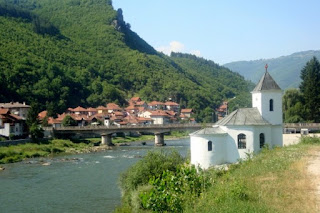The church dedicated to the Epiphany raised in 1281 as an endowment of David the Monk, the son of Vukan and grandson of Nemanja. Life in the monastery went normally until the Turkish invasion on this region in the middle of 15th century. The Davidovica Monastery was destroyed probably during the Great Migration of Serbs under Patriarch Arsenije Carnojevic the Third.
During the archeological excavations in 1958 under the foundations of the church the remains of an older construction were unearthed, most probably a Roman basilica from the 6th century. A grave plate was found in the church that is in some way linked to a return of Prince Vratko, father of Princess Milica. According to the legend, the family Jugovic was buried in Davidovica. The legend is somewhat corroborated by excavation in 1997 when eight graves with tombstones were found. On the one of them there is the inscription "God's rabbi Demetrius but called Vratko". This was enough to bring the name Vratko in connection with father of Princess Milica presenting Davidovica as the churchyard of brothers Jugovic, whose relics were transferred there after the battle of Kosovo by Princess Milica. Monastery is 2.5 km away from Brodarevo highway. It is cultural monument of great importance.




































